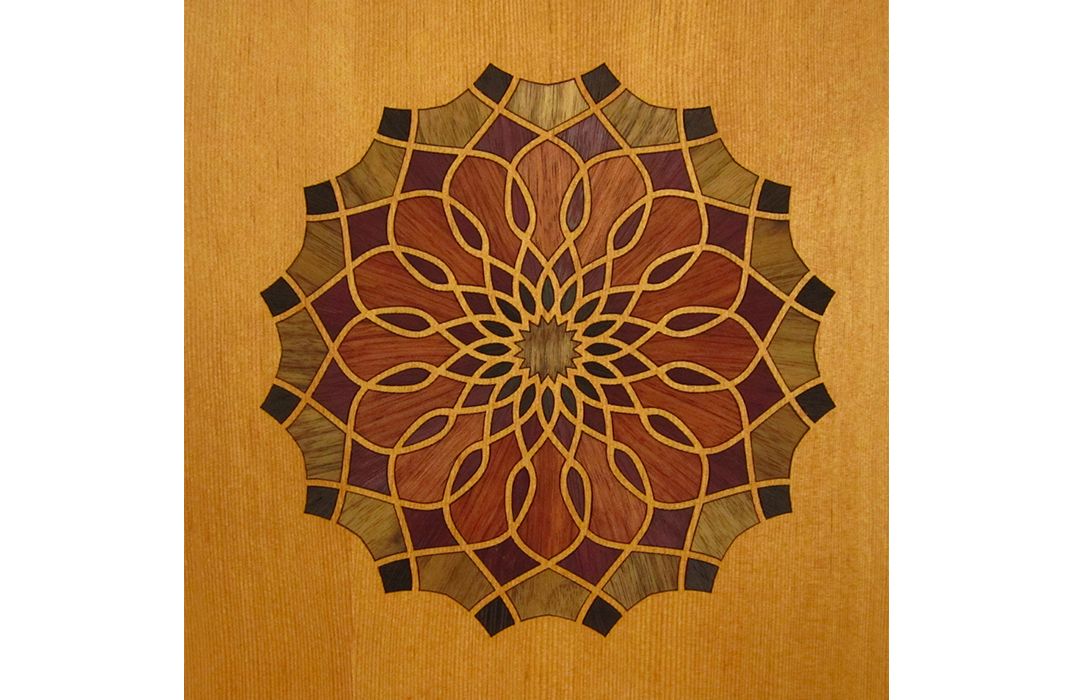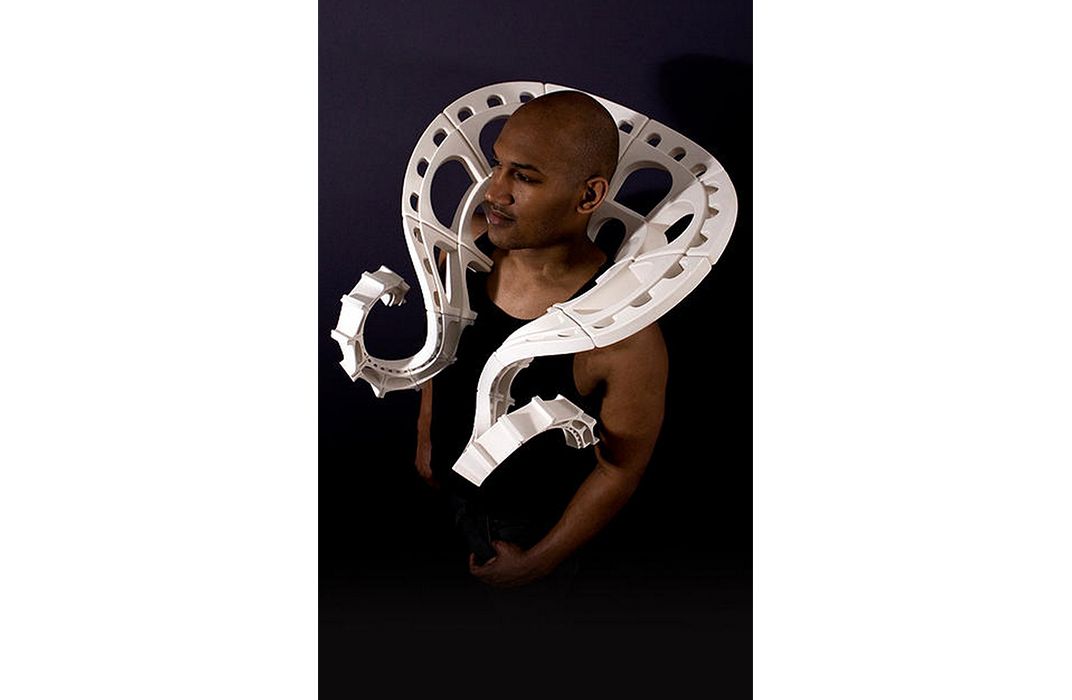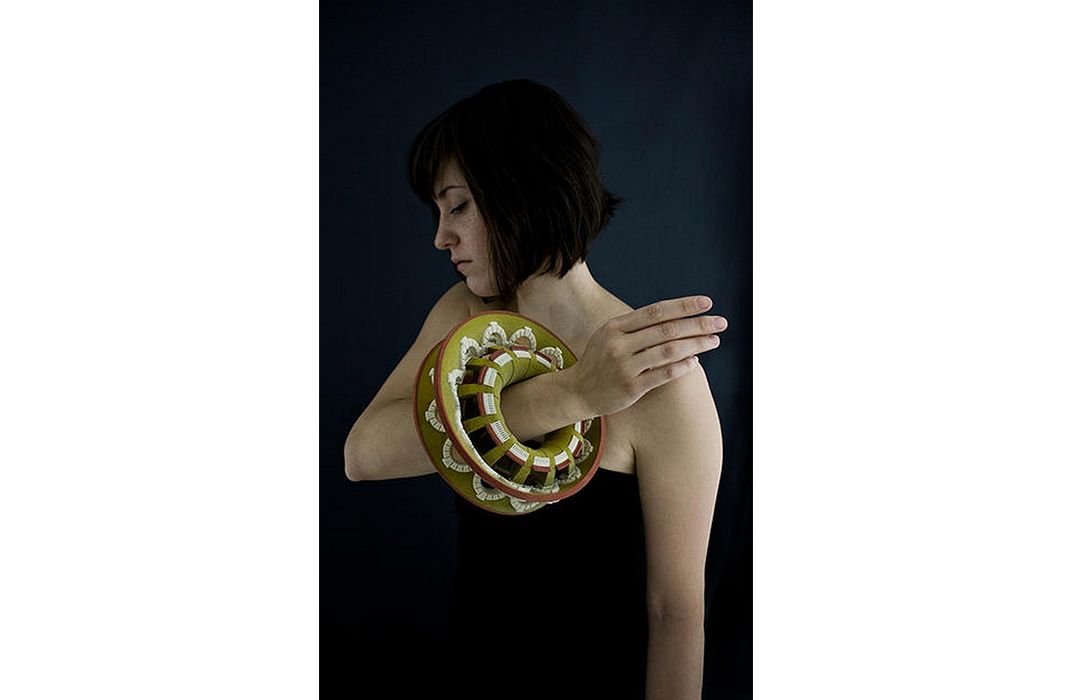Innovation Handi-Hour Gives Creative Types the Chance to Dive-in Hands First
These artists blur boundaries between craft and manufacturing, using lasers, computers and 3D printers
/https://tf-cmsv2-smithsonianmag-media.s3.amazonaws.com/filer/12/53/12537601-fab6-47c9-9d27-7ef7bbc13bf4/handihourweb.jpg)
Christy Oates and Joshua DeMonte are traditionally trained artists crafting works, using new technology like lasers, computers and 3-D printers.
Oates is a woodworker who uses computer-assisted software and laser cutters to construct fanciful pieces of folding furniture and intricate marquetry. And DeMonte is a jewelry designer who uses 3D printing to make wearable art like balcony-shaped bracelets and curvilinear aquaduct collars that were inspired by classic architecture. The pair were both recognized in 2013 in the museum's exhibition “40 Under 40: Craft Futures,” which celebrated emerging artists and changing notions of craft.
Oates and DeMonte will be in attendance at this week’s Innovation Handi-hour, an evening crafting circle and happy hour co-sponsored by the Smithsonian American Art Museum's Renwick Gallery and the U.S. Patent and Trademark Office. Tickets provide attendees with drinks, an unlimited supply of crafting materials and the chance visit with Oates and DeMonte to discuss their work.
“We saw [DeMonte and Oates] as being individuals who were definitely going to skyrocket. They were two people who were really embracing innovative technologies, and they were the first on my list to contact [while planning the event].”says Katie Crooks, the museum’s senior public programs coordinator, who organized the event.
DeMonte, who currently directs the Interdisciplinary Object Design program and Object Lab at Towson University, received both his B.FA. and M.FA. from the Tyler School of Art in Philadelphia. As a college student, he primarily studied metalsmithing. His focus shifted, however, once he reached graduate school and took several classes in computer-aided design and 3D printing.
Soon, DeMonte realized he could use these tools to replicate large-scale, 3D objects. He started fashioning small buildings and architectural elements, like staircases and windows, but with a twist. He turned them into jewelry.
“My adviser at the time was like, ‘Congratulations, you’re taking the easy way out of this,” he laughs. “‘Punching a hole in something or putting a loop and sliding a chain through it doesn’t necessarily make it jewelry.’ So that’s what got me thinking about architectural space vs. the space of the figure” –in short, how buildings would look if they were built on the scale and slope of the human body. This notion inspired an accessories line of collars, cuffs and bracelets.
Oates, too, honed her knowledge of emerging technology in graduate school. The full-time artist earned her M.F.A at San Diego State University; her thesis focused on designing space-efficient plywood furniture that collapsed or folded into mounted wall art. For the project, Oates needed access to a laser cutter. She visited a local manufacturing company, where the owners offered her access to their machines in exchange for labor.
“I really got to know the lasers well,” recalls Oates. “I got some great training on the machines, especially with precise part-fitting, and came up with my own ideas on how to use the machines in new ways with wood.”
Having learned the art of wood marquetry from a master craftsman, it seemed natural to her, then, to use this new technology to put a fresh spin on the age-old art. She started using computer software to sketch geometric designs. Then, she’d use laser cutters to transform the designs into delicate parts that fit together seamlessly.
With so many tools, materials and mediums at their disposal, Oates and DeMonte are equal parts artist and manufacturer, designer and producer. But are the two also craftsmen? Can a machine-produced item ever be considered “handmade?” The curators of the Renwick Gallery—which has acquired works by both artists—and Crooks think so.
“A potter can't make a bowl without utilizing a pottery wheel, and at one time a pottery wheel was considered new technology as well,” says Crooks. “These are artists who are using the latest tools to help them make their pieces. Crafting is about the making; it is about the process. Just because they're utilizing technology doesn’t take anything away from it.”
The Innovation Handi-hour will be held in the Luce Foundation Center for American Art, located on the third floor of the Smithsonian American Art Museum, on Wednesday, March 25, 2015, from 5:30-9 p.m. Admission is $10 at the door, and includes two drink tickets, light snacks and crafting materials. Adults ages 21+.
/https://tf-cmsv2-smithsonianmag-media.s3.amazonaws.com/accounts/headshot/Fawcett-Bio.jpg)



/https://tf-cmsv2-smithsonianmag-media.s3.amazonaws.com/filer/4f/16/4f162b75-0316-4f8b-af25-415d10a343c7/coates-1web.jpg)
/https://tf-cmsv2-smithsonianmag-media.s3.amazonaws.com/accounts/headshot/Fawcett-Bio.jpg)